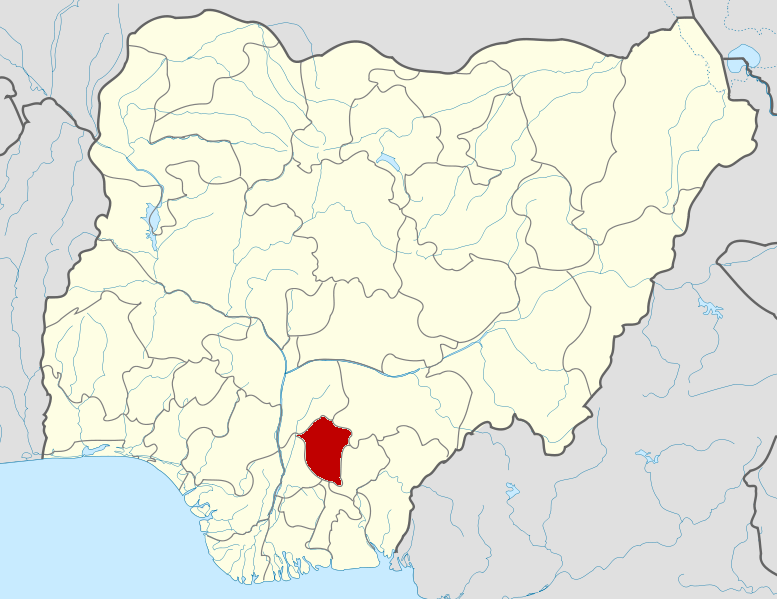Effectiveness of education and training programmes to help clinicians assess and classify perineal tears: a systematic review
Obstetrics and gynaecology
Effectiveness of education and training programmes to help clinicians assess and classify perineal tears: a systematic review
For every 100 women having a vaginal birth, approximately four will experience a severe (third-degree or fourth-degree) perineal tear. Severe perineal tears are associated with significant short-term and long-term consequences if not recognised and repaired. There are global efforts to reduce incidence of severe perineal tears including initiatives to strengthen education and training of clinicians in perineal anatomy and perineal tear assessment and classification. This systematic review aimed to describe and evaluate the effectiveness of these initiatives.
Systematic review, reported in accordance with the Preferred Reporting Items for Systematic Reviews and Meta-Analyses (PRISMA) guidelines.
Medline (Ovid), CINAHL Complete (EBSCO), MIDIRS and EMBASE (Ovid) were searched through 15 February 2024.
Studies reporting simple or complex interventions aimed at improving the skills and knowledge of clinicians in perineal anatomy and/or the clinical assessment and classification of perineal tears were eligible.
Two reviewers independently screened studies for eligibility and appraised the quality of individual studies using the Cochrane Risk of Bias (RoB) 2.0 tool or Risk of Bias in Non-Randomised Studies of Interventions (ROBINS-I) tool.
In total, 7645 citations were screened and 39 studies included. We identified nine unique interventions including training programmes, short workshops and senior obstetrician supervision. Many studies were from high-income countries, in primary care settings and at high risk of bias.
Effective education included practical components, such as hands-on skills and training in perineal anatomy, assessment and classification, rather than senior supervision alone. Ongoing review of practice appears to be crucial for maintaining knowledge and skills. Future research should focus on interventions tailored to limited-resource settings, and the optimal length and intensity of training programmes to assess and classify perineal tears.
CRD42020185431.
All data relevant to the study are included in the article or uploaded as supplementary information. No additional data available.
http://creativecommons.org/licenses/by-nc/4.0/
This is an open access article distributed in accordance with the Creative Commons Attribution Non Commercial (CC BY-NC 4.0) license, which permits others to distribute, remix, adapt, build upon this work non-commercially, and license their derivative works on different terms, provided the original work is properly cited, appropriate credit is given, any changes made indicated, and the use is non-commercial. See: http://creativecommons.org/licenses/by-nc/4.0/.
If you wish to reuse any or all of this article please use the link below which will take you to the Copyright Clearance Center’s RightsLink service. You will be able to get a quick price and instant permission to reuse the content in many different ways.
Perineal trauma is a common occurrence for women giving birth. For every 100 women having a vaginal birth, approximately 16 will not experience any perineal trauma, 80 will experience mild to moderate trauma, and four will experience a severe (third-degree or fourth-degree) perineal tear (figure 1).1 2
Figure 1
The Royal College of Obstetricians & Gynaecologists (RCOG) classification of perineal tears. RCOG recommends that this classification system be used with describing any perineal tear injury.2
Most perineal tears are minor, repaired with simple suturing and heal quickly. More severe tears require postpartum operative repair.1 2 The Royal College of Obstetricians and Gynaecologists (RCOG) classifies perineal tears according to the depth of tissue damage (figure 1).2 Third-degree perineal tears involve the anal sphincter complex, while fourth-degree tears reach through the anal sphincter complex and into the anorectal mucosa.2 Non-modifiable risks like primiparity, maternal ethnicity and age are associated with higher likelihood of tears.3–6 Other risk factors include higher birth weight,5 7 operative vaginal births, especially with forceps,3 5 7 epidural anaesthesia, labour induction and augmentation, and persistent occiput posterior presentation.7
If severe perineal tears are not recognised, classified and managed promptly, they can cause significant (and avoidable) morbidity.8 Short-term consequences include perineal pain, infection and sexual dysfunction.2 3 9 In the longer term, mismanaged or poorly healing tears can lead to chronic pain, dyspareunia, anal and urinary incontinence,2 3 9 a reduced quality of life and depression.2 3 9 10 These women experience more costs and inconvenience as they need additional medical care. Sustaining a severe perineal tear may make women more anxious about future births, adversely affecting their reproductive choices, modes of birth, and intimate relationships.11
The capacity of skilled birth attendants (SBAs) to identify, classify and repair perineal tears is important. The WHO defines a SBA as ‘an accredited health professional – such as a midwife, doctor or nurse – who has been educated and trained to proficiency in the skills needed to manage (uncomplicated) pregnancies, childbirth and the immediate postnatal period, and in the identification, management and referral of complications in women and newborns’.12 Visual and digital examinations of a tear after childbirth have been reported as common methods that SBAs use to assess and classify a tear.13 There is an increasing concern that there is a lack of consistent education and training of SBAs, contributing to a lack of skill and ability to perform visual and digital examinations correctly.14–17 Globally, SBAs have reported poor knowledge in perineal anatomy and a lack of education and training in the clinical assessment and classification of perineal tears.14 16 18–20
Perineal tearing during childbirth cannot be prevented entirely due to non-modifiable risk factors.3–6 Currently, there is no national or global standardised package or programme aimed at improving the knowledge and skills of SBAs in assessment and classification of perineal tears. A better understanding of the education and training programmes that will increase SBAs’ knowledge and skills in assessment and classification of perineal tears is needed to inform future education and training programmes.6 The aim of this systematic review was to describe and evaluate the effectiveness of current educational and training programmes targeted at improving the competency and knowledge of SBAs to accurately assess and classify perineal tears.
The review is reported as per the Preferred Reporting Items for Systematic Reviews and Meta-Analyses (PRISMA) guidelines (online supplemental file 1). A research protocol was developed and registered online to PROSPERO on 5 July 2020 (CRD42020185431) (online supplemental file 2).
This systematic review included papers (defined as any written document, including peer-reviewed articles, evaluation reports, audits, theses and conference abstracts) with observational and interventional designs. Studies to be selected included randomised controlled trials, non-randomised studies, evaluations and audits of programmes, and descriptive, cross-sectional, cohort and case-control studies.
This review included any simple or complex intervention(s) aimed at developing the skills and knowledge of SBAs in perineal anatomy and/or the clinical assessment and classification of perineal tears. Interventions focused on other areas of maternal, obstetric or gynaecological education (such as perineal repair, episiotomy use and technique, or preventative measures during labour) were excluded. Any form of training or education programme was included, such as supervision and mentoring programmes, university or formal education, training days, workshops, and online training. Interventions involving non-human participants were excluded. Studies in all languages were included. If studies were published in a language other than English, they were translated using Google Translate. There were no restrictions on date or setting. The population of interest included SBAs, including but not limited to, midwives, doctors, nurses, other skilled health workers, doulas, and medical and midwifery students.
The databases searched included Medline (Ovid), Cumulative Index to Nursing and Allied Health Literature (CINAHL) Complete (EBSCO), Midwifery Information & Resource Service (MIDIRS), and EMBASE (Ovid). All were searched on 1 July 2020 and the search was updated on 26–27 September 2022 and again on 15 February 2024. An updated search in 2024 was not performed on the MIDIRS database due to lack of access. For the full search strategy, see online supplemental file 3.
All studies identified from each database search were imported into Endnote software.21 Covidence was used as the review management tool throughout the study screening process.22 All studies were combined in Endnote and imported into Covidence where duplicates were removed. Title and abstract screening, and full-text screening were conducted. AR and a fellow research student (AE) both independently screened the titles and abstracts of the papers resulting from the database searchers. All studies meeting inclusion criteria had the full text screened for inclusion. Conflicts were resolved via collaborative discussion. GS, ANW and MP conducted screening for the search updates using the same process. The search flow profile can be seen in the PRISMA flow diagram presented in figure 2.
Figure 2
PRISMA flow diagram. Adapted from Page MJ, McKenzie JE, Bossuyt PM, Boutron I, Hoffmann TC, Mulrow CD, et al. The PRISMA 2020 statement: an updated guideline for reporting systematic reviews. BMJ 2021;372:n71. doi: 10.1136/bmj.n71. PRISMA, Preferred Reporting Items for Systematic Reviews and Meta-Analyses.
Data extraction was undertaken by AR and AE independently using an Excel data extraction form developed and piloted by AR prior to data extraction commencing. Any discrepancies between reviewers were resolved through discussion. The same method was used by GS and MP to extract data from the search update papers. Where available, extracted data included:
AR and AE both independently assessed the risk of bias of each included study. For randomised trials, the Cochrane Risk of Bias (RoB) 2.0 tool was used.23 For non-randomised studies, the Risk of Bias in Non-Randomised Studies of Interventions (ROBINS-I) tool was used.24 Any disagreements that arose between the independent reviewers were resolved by discussion. GS and MP used the same method.
A descriptive synthesis approach was used for data analysis due to the considerable heterogeneity of the included studies in terms of methodology, cadre of trainees and trainers, type of training/education intervention and outcome measures obtained. A meta-analysis was deemed inappropriate due to the high clinical and methodological heterogeneity between studies.
This review did not require ethical approval from a Human Research Ethics Committee (HREC) as it used publicly available data.
None.
In total, 7645 studies were identified in the literature search and ultimately 39 included in this review (figure 2).
Details regarding the studies’ design, setting, participants, content, outcomes and quality are reported in tables 1–3. Details regarding the form and length of the training programmes are reported in table 4.
Table 1
Design and setting of included studies
Table 2
Participants, content and outcomes of included studies
Table 3
Quality of included studies
Table 4
Form and length of educational programme
21 studies included a population of over 437 416 women who were giving birth or who had given birth at the relevant maternity unit where the studies were being undertaken.11 16 25–43 These studies collected delivery outcome data of the occurrence of severe perineal tear from eligible women to determine the effect of the intervention on incidence of severe perineal tear rates. Inclusion criteria varied considerably across these studies. Three studies included all births11 33 37 and seven specified all vaginal births.26 28 31 34 39 41 43 Multiple studies excluded caesarean deliveries,16 25 26 28 30–32 34 35 38–42 preterm births,29 30 32 36 42 vaginal breech births29 30 36 38 42 and non-singleton pregnancies.25 29 30 35 36 38 42
Participants from 16 studies were SBAs who received education or training in identifying perineal anatomy, and/or clinical assessment and classification of perineal tears,18 44–58 or were supervised by senior clinicians (online supplemental file 4).36 41
Two studies did not adequately describe their training intervention to allow evaluation of the effectiveness of the technique.59 60
Knowledge and skill competency
Of the seven studies that compared pre-implementation and post-implementation changes of knowledge or skill competency of SBAs in perineal anatomy, all seven reported an increase in knowledge/skill competency.45 46 50 52 55 57 58 Four studies showed a statistically significant change: an increase in questionnaire score from 66.3% to 84.3% (p<0.001),58 an increase in mean examination score from 0.44 to 0.96 (p<0.05),46 an increase of 46±14% in the number of anatomical structures identified post-training (p=0.002),50 and a mean anatomy knowledge score that increased from 57% to 69% (p<0.001) post-education.52
Of the two studies that compared pre-implementation and post-implementation changes in knowledge or skill competency of SBAs in clinical assessment and classification of perineal tears,47 51 one study reported a statistically significant increase.51 Participant self-evaluation demonstrated improved preparedness for correction of severe perineal lacerations post-intervention.51 The remaining study reported a slight decrease without statistical significance in knowledge/skill competency in perineal classification, with repeatability and agreement of each independently assessed tear by a midwife and research fellow decreased from 72.7% (39.0 to 94.0 95% CI) to 66.7% (38.4 to 88.2 95% CI).47 Another study reported high levels of agreement (considered as Cohen’s k statistic scores >0.61) between two midwives who independently assessed and classified the perineal tears (k=0.71, p<0.05); however, there is no pre-implementation comparison made to indicate efficacy.54
Five studies compared pre-implementation and post-implementation changes of knowledge or skill competency of SBAs in perineal anatomy, and clinical assessment and classification of perineal tears.18 29 44 49 53 Three of these reported statistically significant improvements in perineal anatomy and clinical assessment and classification of perineal tears.18 48 49 In one study, the number of midwives performing a rectal examination prior to repairing perineal trauma increased from 40% to 89% (p<0.001) post-intervention, and correct classification of third-degree tear and fourth-degree tear increased from 77% to 85% (p=0.049), and 45% to 65% (p<0.001), respectively.18 The second study reported an increase in correct identification of perineal anatomy pre-score to post-score of 23.3% to 100% (p<0.001), and an increase in correct classification of third-degree tear pre-score to post-score of 26.7% to 93.3% (p<0.001).48 The third study reported a pre-intervention score of 23.3% for anatomy of perineum which increased post-intervention to 100% (p<0.001). Likewise, identification of the external anal sphincter increased from 70% to 100% (p<0.01), identification of the internal anal sphincter increased from 10% to 96.7% (p<0.001), and classification of perineal tears increased from 50% to 100% (p<0.001).49 Two studies reported an increase without reported statistical significance in knowledge or skill competency of SBAs in perineal anatomy, and clinical assessment and classification of perineal tears.44 53 Another study did not provide a pre-implementation comparison to demonstrate improvement.56
Perineal tear rate
One study reported on change in perineal tear rate pre-education and post-education in perineal anatomy; however, it is unclear if the 2% increase was statistically significant.40
15 studies compared change in perineal tear rate pre-education and post-education in the assessment and classification of perineal tears.11 16 25–28 32–35 37–39 42 43 Seven of these studies found statistically significant results.11 16 28 32 33 38 39 The four studies which also included education in tear prevention found a 32%–56% rate reduction in perineal tears.11 32 33 39 The three studies which provided education on tear assessment and classification only, found a 22%–50% rate increase in tears.16 28 38
Two studies compared change in perineal tear rate pre-education and post-education in perineal anatomy, and assessment and classification of perineal tears.30 31 One of these had statistically significant results, a 35% rate reduction of perineal tears post-education, where the education programme also included tear prevention techniques.31
Three studies reported on the effect of senior supervision of more junior staff during births.29 36 41 None reported statistically significant results. Two studies found 12.5% and 48% rate reductions of perineal tears.29 41 One found a 42% rate increase.36
The duration of effective training to impact perineal tear rates was not clear from the data available. Statistically significant changes in tear rates were seen with interventions of at least 3 months and those longer than 6 months did not provide better outcomes.16 25 26 28–31 33–37 40 41 59
This systematic review identified the available evidence on education and training programmes aimed at improving the knowledge and/or skill of SBAs in perineal anatomy, clinical assessment or classification of perineal tears. The findings demonstrate that these programmes can increase the knowledge and skills of SBAs and can lead to the increased detection and prevention of perineal tears.
The education and training programmes in this review use a wide range of methods, including lectures, videos, workshops with animal or 3D models, bedside teaching, and supervised clinical training (online supplemental file 4). A recent systematic review by Diaz et al on the effectiveness of training programmes in perineal tear assessment acknowledged this variety of learning modalities in perineal tear education as a strength, catering to participants with a variety of different learning styles.61
This review highlights the efficacy of educational interventions focused on perineal anatomy, with statistically significant increases in knowledge reported in seven studies.18 46 48–50 52 58 The majority of these studies had an intervention duration of 2 days or less, and 2-hour to 3-hour workshops were just as effective as longer options, suggesting multiple days of education are likely unnecessary for learning perineal anatomy. These workshops typically involved didactic education on pelvic floor anatomy followed by a practical hands-on workshop or dissection lab.18 46 48 49 52 The practical element of these workshops likely bolsters their efficacy, with anatomical dissection often heralded as the gold standard for anatomy education,62 and simulated exercises being found more effective than lecture-based teaching at improving knowledge and confidence.63–65 Practical workshops have previously been shown to increase knowledge in perineal anatomy. A study by Dancz et al analysed the effect of two different perineal surgical models on resident knowledge, confidence levels and repair techniques, finding that both surgical models significantly improved resident doctors’ confidence and clinical knowledge of perineal tears.66 Another study by Andrews et al found a structured perineal tear workshop with didactic learning and a practical component could even lead to an improvement in outcomes post-perineal repair.67 This review adds to the current literature that a multimodal approach can improve knowledge of perineal anatomy and assessment.
Effective educational interventions in healthcare are in a period of evolution as technology allows for rapidly emerging techniques. In our review, three studies investigated the use of simulation. It was found simulation exercises are more effective than lecture-based teaching at improving knowledge, critical thinking, and confidence, and improve both individual and team performance.63–65 The use of interprofessional simulation can also improve patient-reported quality of care and communication within teams.68 High fidelity models lead to superior patient outcomes when compared with routine models however can be costly.65 While our review identified simulation using low-cost models or mannequins, virtual patient simulations present an opportunity to avoid more costly models and are shown to improve knowledge and skills beyond traditional simulations in both high-income and low-income settings69; virtual reality being the most effective emerging model.70 Another opportunity that technology presents is telementoring, allowing tutors to train staff digitally with comparable effectiveness to on-site training.71 Greater exploration and evaluation of simulation education and training opportunities to prevent severe perineal tears is needed, and content should focus on clinical relevance, integrating clinical scenarios and patient examples where applicable.72
This review identified four studies involving educational programmes specifically focused on perineal tear prevention which yielded statistically significant reductions in perineal tear rates.11 32 33 39 Each educational programme used a different approach to perineal tear prevention education. Mullally et al33 were the only study in this subset to use a care bundle, a guideline-based approach outlining recommendations to assist in standardising healthcare practices and to improve outcomes.73 The training programme involved education on the ‘PEACHES’ care bundle—Position, Extra midwife, Assess the perineum, Communication and warm compress, Hands-on technique, Episiotomy if required, Slowly.33 The ‘PEACHES’ care bundle, developed in London in 2015, has since been replaced by the Obstetric Anal Sphincter Injuries (OASI) care bundle. A UK-based multicentre study published in 202074 examined severe perineal tear rates after the implementation of the OASI care bundle, finding a decrease in severe perineal tears from 3.3% to 3.0% (adjusted OR 0.80, 95% CI 0.65 to 0.98 p=0.03)—a reduction of 20% in the case-mix-adjusted risk of severe perineal tears. Despite reports of efficacy, the reception of perineal tear prevention bundles in the UK and Australia has been mixed, with some reviewers critical of the quality of evidence supporting the recommendations and concerns the bundles can compromise autonomy for the birthing woman and midwife.75–77 The utility of care bundles in guiding perineal tear education and training programmes remains unknown and requires further well-designed controlled before-after studies to evaluate.
There are a number of antenatal and intrapartum practices recommended to prevent severe perineal tears, but their effectiveness is variable.78–94 The WHO recommends the use of perineal massage, warm compresses and a ‘hands on’ guarding of the perineum during second stage to reduce perineal trauma.95 Across other international and national perineal guidelines, there is some consistency on prevention and management of severe tears, but variations in key practices exist.4
Norway is leading several efforts to reduce severe perineal tear rates. In 2005, after experiencing a continual increase in women experiencing severe perineal tear rates, the Norwegian government granted funding for a national multifaceted quality improvement intervention to address the issue. The quality improvement intervention was implemented in five hospitals between 2005 and 2007.96 A core internal team of experts to provide continual training for all maternity staff was established.97 98 The interventions implemented involved 2-day or 3-day compulsory tutorials on perineal anatomy, the RCOG guidelines to classify severe perineal tears, and how to use and adopt the hands-on technique to protect the perineum at birth. This was followed by a period of practical supervision using the technique first on anatomical mannequins, then with real women.97 98 The intervention also focused on the use of episiotomy, where an episiotomy was only to be used where clinically indicated on an individual basis. All five Norwegian hospitals that implemented this quality improvement intervention reported dramatic reductions in the incidence of severe perineal tears (4%–5% to 1%–2%).97–100
Notably, of the four included studies focused on perineal tear prevention with perineal tears as the outcome measure, the training programmes in Jango et al, Mullaly et al and Laine et al contained elements of the Norwegian quality improvement interventions, including the use of supervised hands-on learning and ongoing review of practice. A further five studies30 34 35 39 41 used expert facilitators who worked in the successful Norwegian prevention programmes. Of these five studies, all found a reduction in the rate of severe perineal tears; however, only one study result was statistically significant.
Given the success of Norway’s perineal tear prevention intervention and the promising findings of similar programmes in this review, future educational and training programmes should take into consideration the framework and lessons learnt from the original Norwegian programme including ongoing practice review.
This review highlights the range of personnel involved in perineal tear education both as facilitators and participants. The educational programmes were delivered to midwives and doctors together in most studies; however, frequently, the personnel being trained were doctors alone (table 2). The shared responsibility of tears among a multidisciplinary team means that all perineal prevention education and training programmes should emphasise interdisciplinary communication and teamwork.101 A study by Dahlen and Homer examined the views of midwives on perineal tear repairs, finding strong support for perineal tear education to be undertaken in multidisciplinary teams with doctors.102
A multidisciplinary team was used to facilitate the educational or training programmes in seven studies with promising results. A multidisciplinary approach in healthcare settings has long been regarded as essential in obstetric patient care.103 104 Potential barriers to effective communication and teamwork need to be recognised and addressed through multidisciplinary education and training programmes to ensure timely and accurate diagnosis, repair and management of tears.
Studies which focused on perineal tear assessment and classification, but not prevention, all found an increased rate in perineal tears.16 28 38 This supports previous findings that perineal tear detection rates increase when postpartum women are examined by a trained SBA.14 A study by Blondel et al examined rates of perineal tears across 20 European countries, finding significant variation. This study proposed that differences in training and the lack of standardised assessment practices could be a cause for the variation in perineal tear incidence; a hypothesis that is consistent with our findings.105
Prompt and accurate diagnosis of perineal tears is essential to ensure adequate repair, post-repair management and follow-up,106 in addition to preventing long-term consequences of missed diagnosis including a high burden of faecal and urinary incontinence.107 The findings of this review highlight the importance of training programmes in preventing the short-term and long-term sequelae of missed diagnosis.
To our knowledge, this systematic review is the first to examine education and training interventions that can improve SBAs knowledge and skills in perineal anatomy, and perineal tear assessment and classification. A broad and systematic approach was used to identify eligible studies, without year or language restrictions. The search was updated twice to ensure currency of data. Only two of the 14 countries where programmes were identified were low-income or middle-income countries, highlighting the need for greater understanding of perineal tear prevention programmes in these settings. A skew towards high-income settings reduced the focus on cost-effective models and lack of intervention detail did not allow observations regarding expense. Other limitations of this review include the heterogeneity of studies and outcome measures. Many studies identified were at considerable risk of bias and not accounting for confounding variables, drawing into question the individual effect of training interventions. Studies were limited by small sample sizes causing a lack of generalisability of results to the greater population, the effect of the intervention being measured as the overall effect of a bundle of interventions and not the specific aspect of the intervention relevant to this review, self-administered questionnaires as the outcome measure with risk of response and information bias, and lack of control of potential confounding variables such as important perineal tear risk factors and previous clinical experience with severe perineal tears. As such, findings should be interpreted and applied to different contexts with caution.
In addition, limited research exists on the optimal duration of short educational interventions in healthcare. A study by Jaufuraully et al showed retention of knowledge has been shown to decline as early as 6 months, with knowledge retained when 3-month and 6-month post-intervention training was implemented.65
Most of the studies in this review were non-RCTs at high risk of bias. The Cochrane Effective Practice and Organization of Care Groups recommend educational systematic reviews include the following study designs: RCTs, non-RCTs, controlled before-after studies and interrupted time series.108 A recent RCT published in the Lancet provided strong evidence to support the recommendation of two midwives present during the second stage of labour to reduce severe perineal tears.109 Further RCTs of this quality could lead to further recommendations to contribute to efficacious perineal tear prevention bundles. Future studies should include more robust study designs, larger sample sizes and include high burden, low resource settings to enhance the applicability of future findings to wider populations.
Future training and education programmes should include multidisciplinary training, including both midwives and doctors with various levels of experience in facilitator and participant roles. Perineal anatomy-specific education is effective when included in university medical curricula, and future research should explore if this effect is true within a university midwifery setting. The optimum length of delivery of the effective education and training programmes was unclear and therefore requires investigation to ensure effective and appropriate educational resource distribution. Very few studies included an evaluation component. Routine evaluation needs to be embedded into all training and education programmes to determine the effectiveness of interventions specific to enhancing the knowledge and skill of SBAs, allowing quality assessment and improvement.
This systematic review summarised the available literature aimed at improving the knowledge and/or skill of SBAs in perineal anatomy, clinical assessment and classification of perineal tears. The findings demonstrate that education and training programmes increase the knowledge and skills of SBAs and can lead to the increased detection and prevention of perineal tears. Perineal tear educational and training programmes should use multimodal approaches with multidisciplinary facilitators, and target all personnel involved in the birthing process including students, midwives, junior doctors and obstetricians. Educational programmes that use training in perineal anatomy, assessment and classification were generally more effective than those using senior supervision only. Ongoing review of practice is essential for maintaining knowledge and skills in clinicians. Future research in this area should aim to use robust study designs and focus on areas such as optimum length of programme delivery, programme evaluation and feedback, and outcomes related to increased detection and prevention of perineal tears.
All data relevant to the study are included in the article or uploaded as supplementary information. No additional data available.
Not applicable.
Not applicable.










